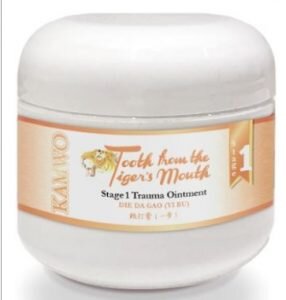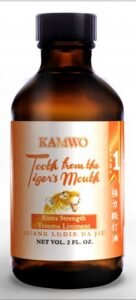The 3 Stages Of Healing Sinew (Soft Tissue) Injuries: Stage 1 – Acute - by Tom Bisio
Posted by Tom on 20th May 2023

(*Reposted with permission of Tom Bisio)
Sinew injuries, or soft tissue injuries, are not only the most common type of sports injury, they also plague many of us who don’t play sports but perform repetitive tasks, like typing at the computer or gardening. Sinews are the complex connections of soft tissue that surround the joints. Muscles, tendons, and ligaments encased in fibrous connective tissue hold the joints together. When a joint is subjected to the types of stresses imposed upon it by sports activities, these tissues bear the brunt of the strain.
In Chinese medicine, connective tissues around the joint are collectively referred to as Jin. Jin is often translated as ‘sinews’, a concept which includes tendons, ligaments, cartilage, and the fibrous connective tissue around the joint capsule. Interestingly, modern medicine recognizes that during early fetal development all of these tissues develop from one layer of cells, called the mesoderm.
Sinew injuries are categorized according to their severity. In a mild strain or sprain, the sinews are abruptly stretched, creating microscopic tears in tendons and ligaments. In severe sprains, complete tears may occur, creating instability of the joint. If there is only minor swelling and the joint can still function without pain, then the injury is probably minor. With correct treatment, the microscopic tears will heal fairly quickly, and full use is often resumed within a week. Inability to use the joint, or to support the body (if the sprain is in the lower limb), accompanied by dark blue or black swelling, indicates a more severe soft tissue injury that may require an MRI or X-rays.
Chinese sports medicine recognizes that there are three distinct stages in the healing of sinew injuries. This article will focus on the first stage, the Acute Stage of Injury.

Acute Stage 1 Sinew Injuries
The acute stage starts from the moment the injury occurs, and usually lasts from 1-7 days. It is characterized by swelling, redness and pain, and possibly a local sensation of heat, indicating inflammation. If the trauma is minor, this stage may only last 2-3 days. If the injury is more severe, it may be a full week before swelling, redness and pain begin to subside. The swelling is the result of Qi (vital energy), blood and body fluids stagnating, because their normal movement has been disrupted by the force of the injury. This disruption causes blood to accumulate outside the blood vessels in the soft tissue, creating a dark blue or black swelling.
Principles Of Treatment
- Restore normal circulation to the injured area, by reducing swelling, stimulating local circulation, and reducing the redness and heat associated with inflammation.
- Restore the flow of Qi and blood, in order to reduce pain and allow the joint to regain its mobility. Remember in Chinese medicine pain = lack of free flow of Qi, blood and fluids.
- Use movement and exercise to strengthen the injured area in order to prevent re-injury, and to further improve circulation. Movement that stimulates local circulation without overstressing damaged tissue can actually help reduce pain and swelling.
- At this stage it is usually best to avoid local applications of heat, hot compresses, soaks, heating pads, and hot tubs. Adding heat to an already inflamed joint can be like throwing gasoline on a fire. Doing so can easily result in more swelling and pain, thereby delaying the healing process. (Warming therapies are useful in Stage II when the initial inflammation and swelling are gone.)
Analogy of the Beaver Dam
The blockage of Qi, blood and fluids that accompanies sprains and strains is much like a beaver dam. The initial obstruction caused by the force of the injury acts like the sticks, mud and leaves of the dam. The free-flowing clear cool water of the mountain stream is slowed down and reduced to a trickle as stagnant water backs up behind the dam. In the same way that the still water heats up in the sun, stagnant fluids in our body are heated up by our naturally warm temperature, creating local heat and inflammation. Just as the water behind the beaver dam becomes cloudy as sediment is deposited there, so too in the human body, as nutrients and white blood cells rush to the injured area and accumulate.
Applying heat dilates blood vessels, and brings more circulation and more fluids to the injured area, resulting in a bigger pond behind the dam. This can create more swelling and inflammation. The solution is to remove the dam while encouraging the stagnant water behind it to move freely again, re-establishing the natural movement of the stream.
Stage 1 Treatments

San Huang San is perhaps the single most useful herbal formula that can be applied to a severe sinew injury during the acute stage. If you do nothing else, San Huang San alone can produce amazing results. Even if the sprain is severe, you can apply San Huang San before going to the doctor in order to reduce the swelling and inflammation. San Huang San is composed of cooling herbs that reduce inflammation, while breaking up blood stasis. This is the start of restoring free flow of blood and Qi. San Huang San is the main substitute for ice, as ice may reduce inflammation, but can create further stasis by constricting blood vessels and congealing stagnant fluids.
If the injury is not red or hot, but there is significant bruising and pain, then Stage 1 Trauma Ointment might be a better choice. Plasters such as Yunnan Paiyao Plaster, or Wu Yang Brand Pain Relieving Plaster may also be used.
“Ointments” like San Huang San and Trauma Ointment should be applied thickly over the injured area. The injured area is then wrapped in gauze to hold the herbal ointment firmly against the skin. The bandage should be firm enough to hold the medicinal ointment against the skin so that it can penetrate, but not so tight that it cuts off or reduces circulation to the injured area.

2. Bleeding and Cupping
Bleeding the injured area with a sterile lancet followed by cupping (a method that creates a vacuum inside a glass cup, thereby producing a drawing effect on the local area), directly removes stagnant blood and fluids from the injured area. This action “breaks” the beaver dam (see discussion above), re-establishing the free-flow of Qi and blood. I am constantly amazed at how quickly and significantly the ancient “folk medicine” technique of cupping can reduce pain and swelling. Cupping can be followed by a few minutes of massage, and then by applying a poultice of San Huang San to increase the effectiveness of the treatment.
If you can’t bleed the local area, then bleed the Jing-Well points of the meridians that pass through the injured area. Bleeding the Jing-Well points creates movement of Qi and blood in the meridian, and in the injured area. Jing-Well points are located on the tips of the fingers and toes, usually just behind the corner of the nail.

3. Acupuncture and Massage
Needling or pressing on acupuncture points such as Stomach 36 (for an ankle sprain), or LI 10 (for a wrist sprain), combined with gentle massage above and below the point of injury, helps encourage the movement and re-absorption of stagnant fluids trapped in the soft tissue.

4. Trauma Liniment (Die Da Jiu)
Trauma Liniment has been used by martial artists for centuries to treat a wide variety of injuries. Extra Strength Trauma Liniment is a very strong formula for healing soft-tissue injuries. This liniment can be applied externally in combination with simple massage techniques. Alternatively, layers of gauze may be soaked in the liniment and wrapped over the injury, creating a simple poultice. Extra Strength Trauma Liniment contains herbs that are classified as blood activating and blood regulating. These herbs dispel blockages of stagnant Qi and blood, and prevent blood from congealing. Some herbs in this category are said to “break the blood,” or to “crack stagnation,” and they help to dismantle the beaver dam.

5. Die Da Wan (Trauma Pills)
Trauma Pills like the Standard Die Da Wan, Qi Li San, or the very effective Blood Stasis Trauma Pill can be taken internally (administered orally). Blood Stasis Trauma Pill is basically the internal counterpart of Trauma Liniment. The Blood Stasis Trauma Pill is often combined with external therapies, like Extra Strength Trauma Liniment, in order to treat the problem from the inside and outside simultaneously.
6. Movement & Exercise
Simple range of motion exercises that do not aggravate the injury are appropriate at this stage. It is vital to start these as soon as possible in order to prevent muscle atrophy, and to restore normal movement and range of motion to the injured area. Movement also helps to stimulate circulation, reducing residual swelling
Keep It Simple
At first glance all these different choices may seem complicated, but Chinese sports medicine is basically simple and direct. Let’s go back to that most common injury, the sprained ankle. When I was first learning about Chinese sports medicine, my brother sprained his ankle quite badly. It started to swell immediately. Fortunately, I had brought my first aid kit home for the holidays. First I bled the ankle and cupped it to reduce the swelling. Three to four minutes of massage and pressure on leg acu-points like ST36 and GB 39 further reduced the swelling. Then I applied a poultice of San Huang San, which he left on overnight. I then gave him the one trauma pill that was in my kit. The next morning he was able to walk normally, with just a hint of swelling remaining.
Back to the Beaver Dam
Think of each treatment modality as another way of dealing with the problem of the beaver dam.
Cupping & Bleeding: Directly removes part of the dam (stagnant blood and fluids) and some of the pond backed up behind the dam.
San Huang San or Stage 1 Die Da Gao: Helps to move the stagnant pond through the dam, reducing stagnation and inflammation. These Gao prevent more debris (sticks, leaves and mud) from collecting, and as stagnant fluids begin to move, cool the stagnant water behind the dam.
Massage & Acupressure: Pushes stagnant water through and around the dam.
Extra Strength Trauma Liniment: Aids massage in dispersing the pond, but also prevents further accumulation of debris as fluid and blood begin to move.
Blood Stasis Trauma Pill: Cracks open the dam and moves stagnant fluids through.
Movement /Exercise: Restores the free flowing stream to its normal path and keeps it from stagnating again.



